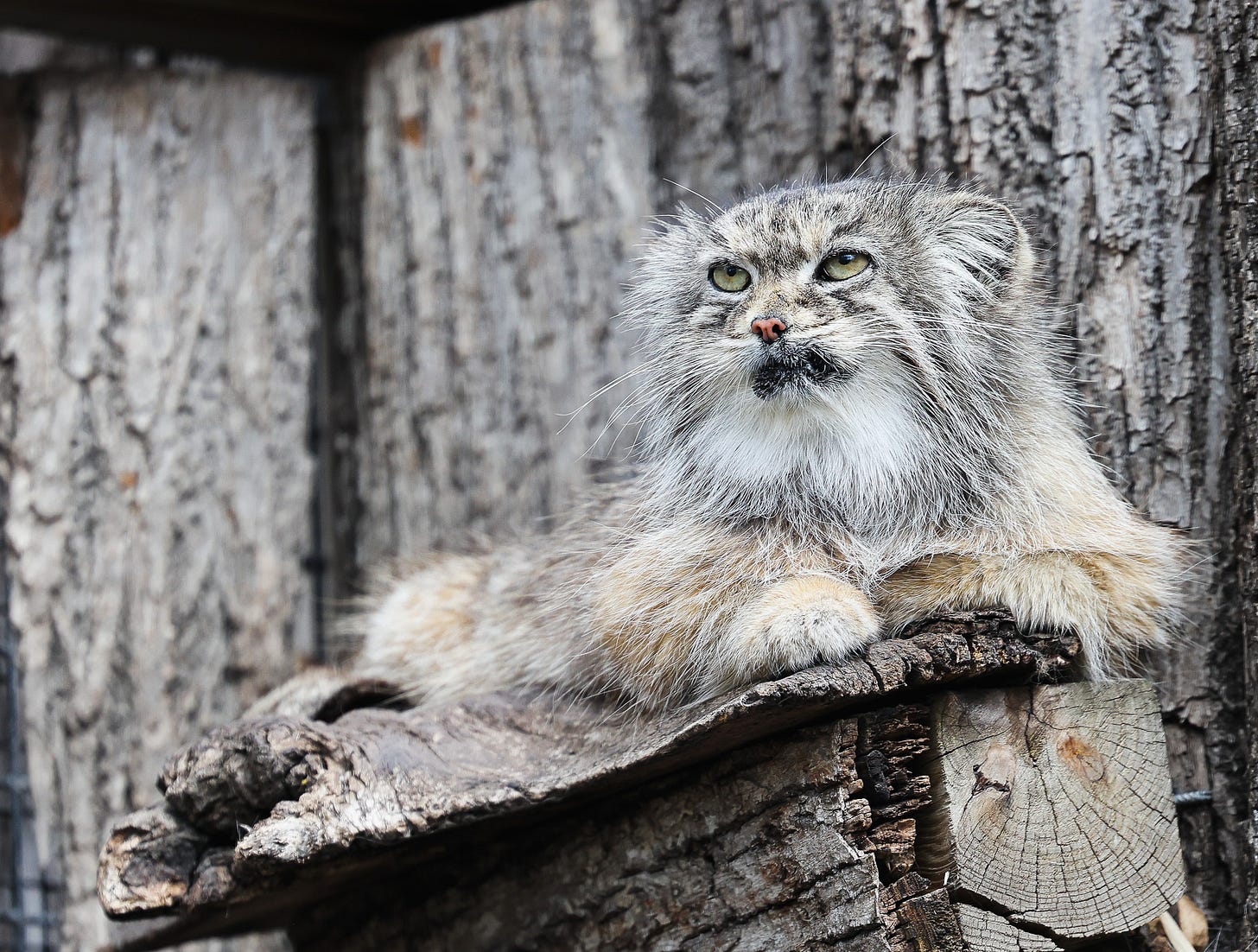Whenever I visit a zoo, I try to arrange a chat with a keeper. Not every facility is open to this — keepers are busy, after all — but when I do get the chance, I always walk away with a deeper appreciation for the animals and the work that goes into caring for them. Keepers know their charges in ways few others ever will, and their insight can completely shift how I understand a manul’s behavior, temperament, and history.
So when I visited Red River Zoo in Fargo, North Dakota, I was thrilled that Sarah, the lead keeper for the cat section, was kind enough to speak with me and show me around. Red River is home to three manuls: Eva, Yeshi, and Kai — each with a distinct personality and story.

When I asked Sarah what the most challenging part of caring for manuls is, her answer came quickly: it’s the individuality. Each manul has unique preferences and quirks, and managing several at once requires flexibility and close attention. Take Eva and Yeshi. Eva, she told me, is reserved and generally indifferent to people — she keeps to herself and doesn’t bother engaging with enrichment or visitors. Yeshi, on the other hand, is highly animated. He’ll run to the fence, follow his keepers closely, and (if given the chance) take a swipe at their legs.
But the most striking part of our conversation wasn’t about logistics or behavior. It was about motivation. When I asked what drew her to this work, Sarah said that small cats are often overlooked. Most attention and funding go toward the big, charismatic species — tigers, lions, leopards. Yet 33 of the 40 wild cat species are small cats, and many face serious conservation challenges with little support. Few have reintroduction programs or broad institutional funding, and even breeding efforts often go under the radar.
That’s part of what brought Sarah to Red River in the first place: the opportunity to work with manuls, especially manul kittens. It was clear that these cats hold a special place in her heart — and after meeting Kai, I could understand why.
Kai is one of the zoo’s male manuls. He’s five years old and recently survived a serious medical emergency. During a routine health check, Kai experienced a seizure and suffered brain swelling. Thanks to the quick action of Red River’s in-house veterinarian, his life was saved — but the seizure left him blind. At least temporarily. It’s possible that he could recover his sight, but nothing is certain.
I was surprised to learn this. Watching him move through his enclosure, I wouldn’t have guessed anything was wrong. Kai navigates his space with ease — he clearly has a mental map of every branch and ledge. High platforms have been removed as a precaution, but he still patrols confidently, nose twitching and ears perked.
He also seemed acutely aware of the people nearby. He picked up on the sound of visitors approaching and clearly knew when keepers were close. And he was particularly invested in leaving his scent behind for Eva, his enclosure neighbor — no doubt an attempt at courtship.

Talking to Sarah about Kai and his care was a highlight of my visit. Her compassion and dedication to her work were unmistakable. I especially loved one of her observations:
“All cats have the same hardware, but different software.”
It’s true. Even within the same species, the differences can be stark. Kai adores strong smells — perfume and animal fur are his favorite forms of enrichment. Eva isn’t interested in enrichment at all; she’s content to nap on her high perch. Kai’s favorite treat is smelt, which Yeshi also enjoys, while Eva won’t touch it.
Same species. Different software.






One of my favorite profiles you’ve done so far, especially since we don’t hear as much on this group of manuls. Felt like they were all new characters for us to meet!
Again thank you for the touching story and the wonderful photos! It's great to know how dedicated some keepers can be. I wish Kai all the best <3